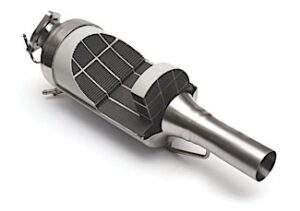DPF cleaning machine
Diesel Particulate Filters (DPFs) are an essential component of a diesel engine’s exhaust system. They work by trapping and removing harmful particulate matter from the engine’s exhaust gas, which helps to reduce emissions and improve air quality. However, over time, DPFs can become clogged with soot and other contaminants, which can reduce their effectiveness and cause a variety of engine problems.
To address this issue, many automotive shops and dealerships have started using dpf cleaning machine to clean and maintain these critical components. But can these machines be used on vehicles with aftertreatment systems? In short, the answer is yes, but there are some important considerations to keep in mind.

First, it’s essential to understand what an aftertreatment system is and how it works. Aftertreatment systems are designed to reduce harmful emissions that are produced by diesel engines. These systems are typically made up of a variety of components, including DPFs, exhaust gas recirculation (EGR) systems, selective catalytic reduction (SCR) systems, and diesel oxidation catalysts (DOCs).
Can a DPF cleaning machine be used on vehicles with aftertreatment systems?
When considering whether a DPF cleaning machine can be used on a vehicle with an aftertreatment system, it’s essential to understand that these systems are highly sensitive and must be handled with care. This is because the chemicals and compounds used in DPF cleaning machines can be harsh and abrasive, and they can potentially damage or compromise the components of the aftertreatment system.
One way to ensure that a DPF cleaning machine is safe to use on a vehicle with an aftertreatment system is to select a machine that is specifically designed for this purpose. These machines are typically equipped with special filters and other features that are designed to prevent damage to the aftertreatment system while still effectively cleaning the DPF.
Another important consideration is the type of carbon cleaning machine method used by the machine. There are several different methods that can be used to clean DPFs, including backflushing, air blasting, and ultrasonic cleaning. Each of these methods has its own advantages and disadvantages, and the best method will depend on the specific make and model of the vehicle, as well as the condition of the DPF.
Regardless of the cleaning method used, it’s important to follow the manufacturer’s instructions carefully and to use the correct chemicals and cleaning agents. This can help to ensure that the DPF is cleaned thoroughly without causing any damage to the aftertreatment system.
Finally, it’s important to consider the overall condition of the aftertreatment system before using a DPF cleaning machine. If the system is already damaged or compromised, then using a cleaning machine may do more harm than good. In these cases, it may be necessary to replace the affected components of the aftertreatment system instead of attempting to clean them.
In conclusion, DPF cleaning machines can be used on vehicles with aftertreatment systems, but it’s important to take the necessary precautions and to use a machine that is specifically designed for this purpose. By doing so, you can effectively clean your DPF and maintain the health of your vehicle’s exhaust system, while still ensuring that you are not causing any damage or compromising the system’s effectiveness.

